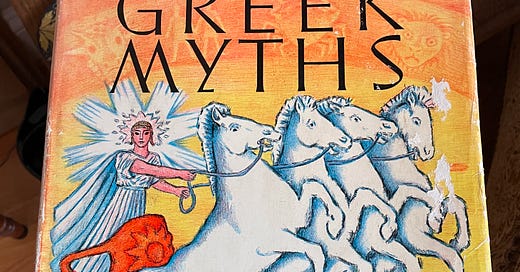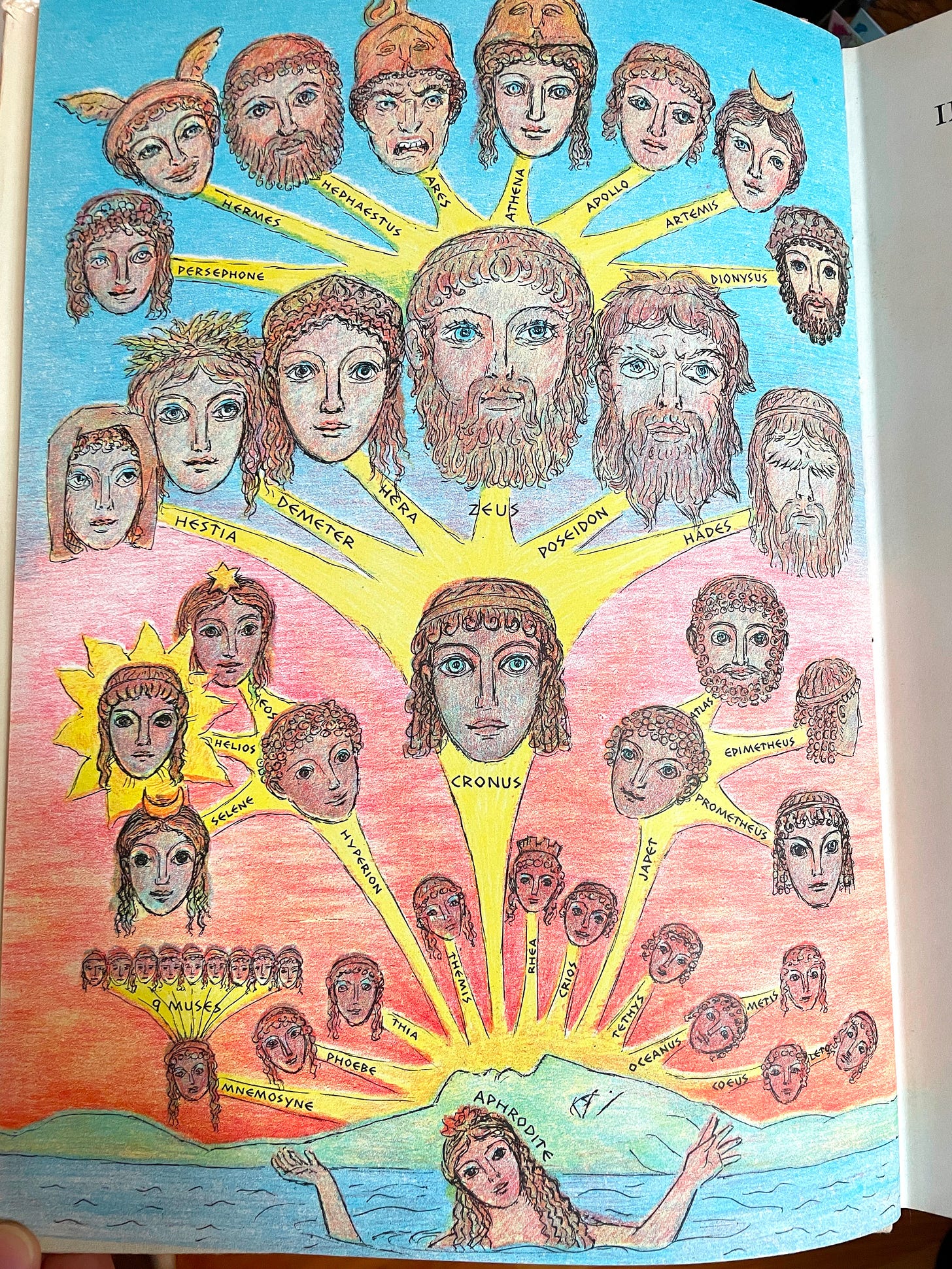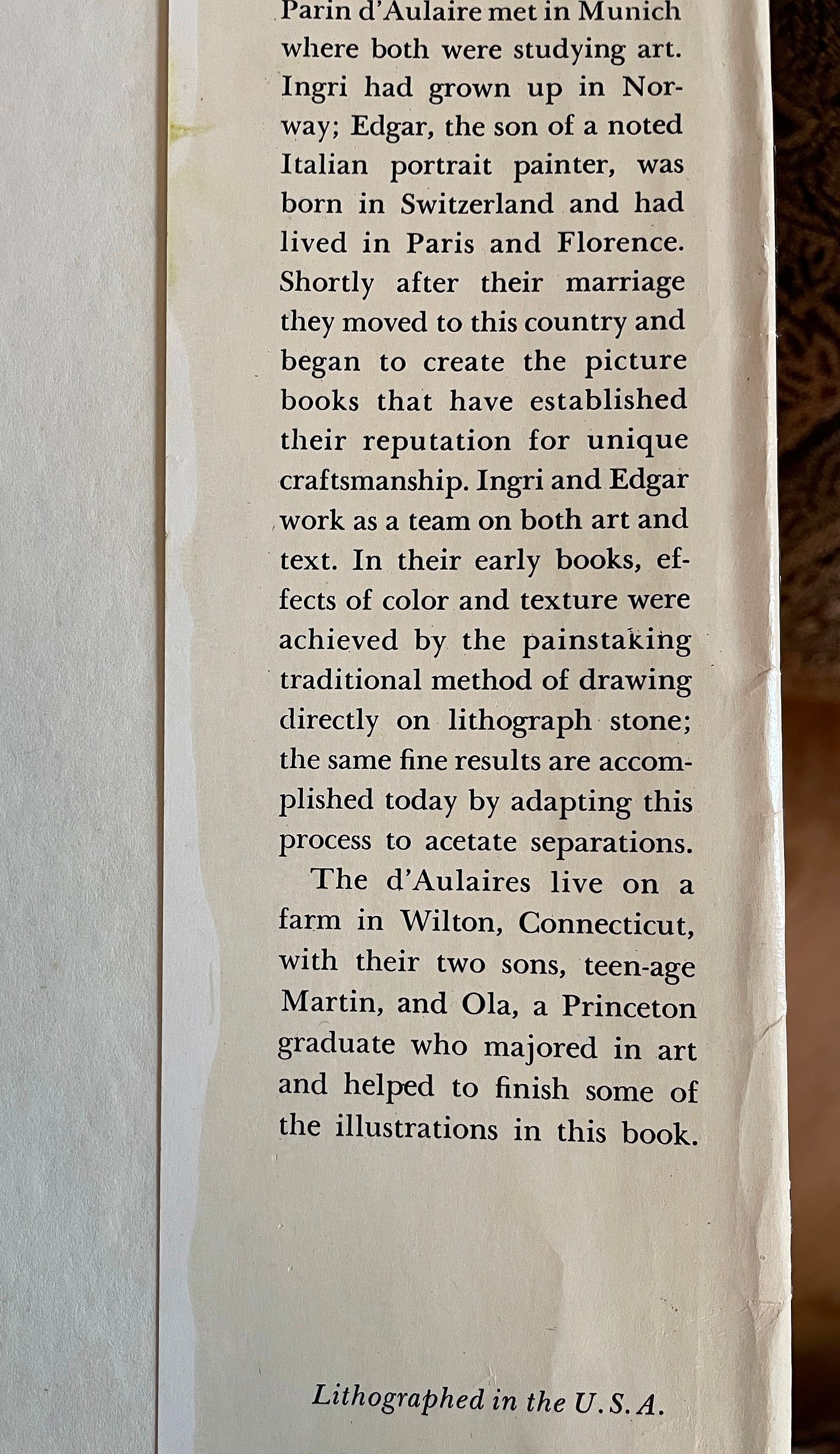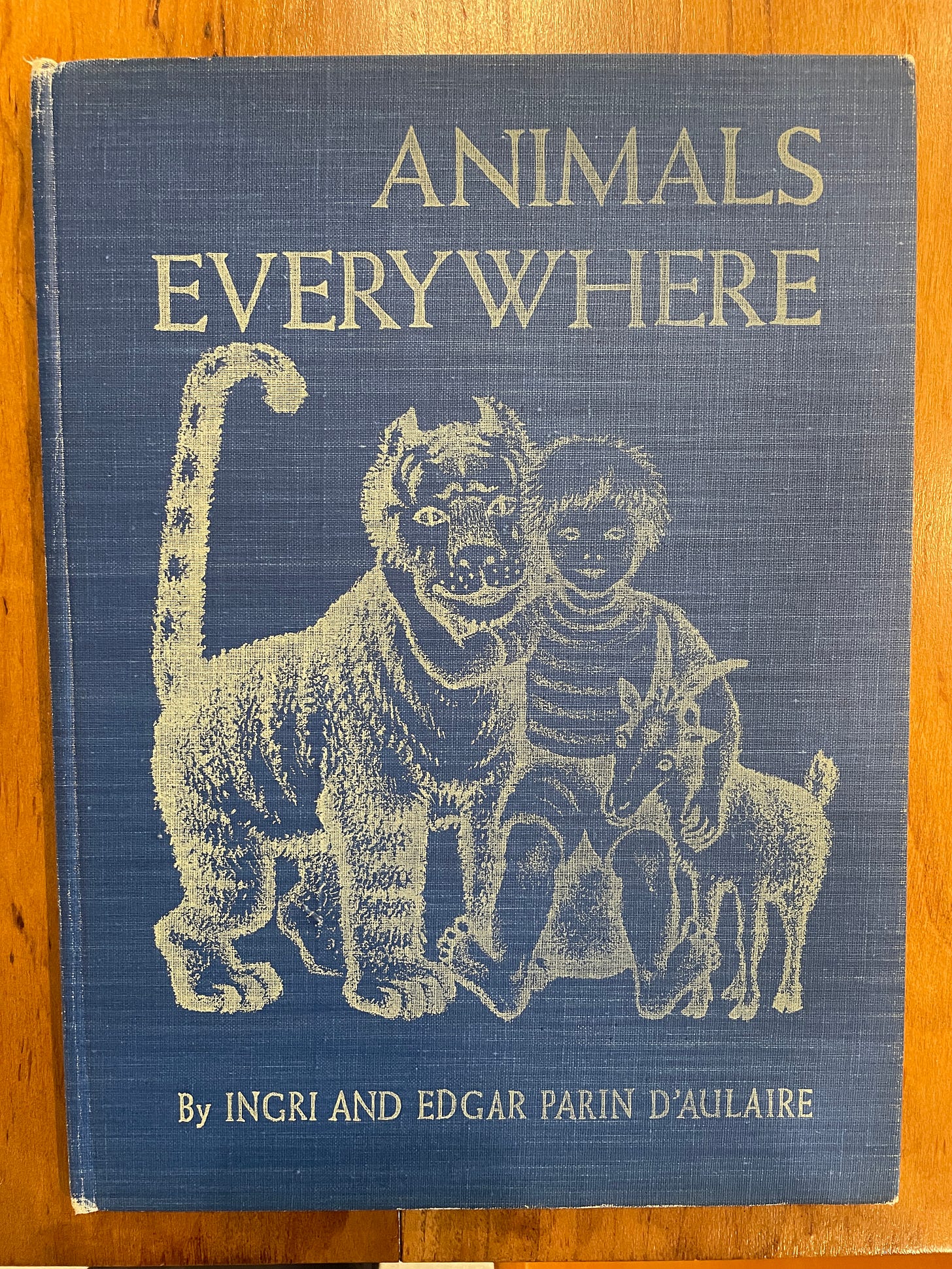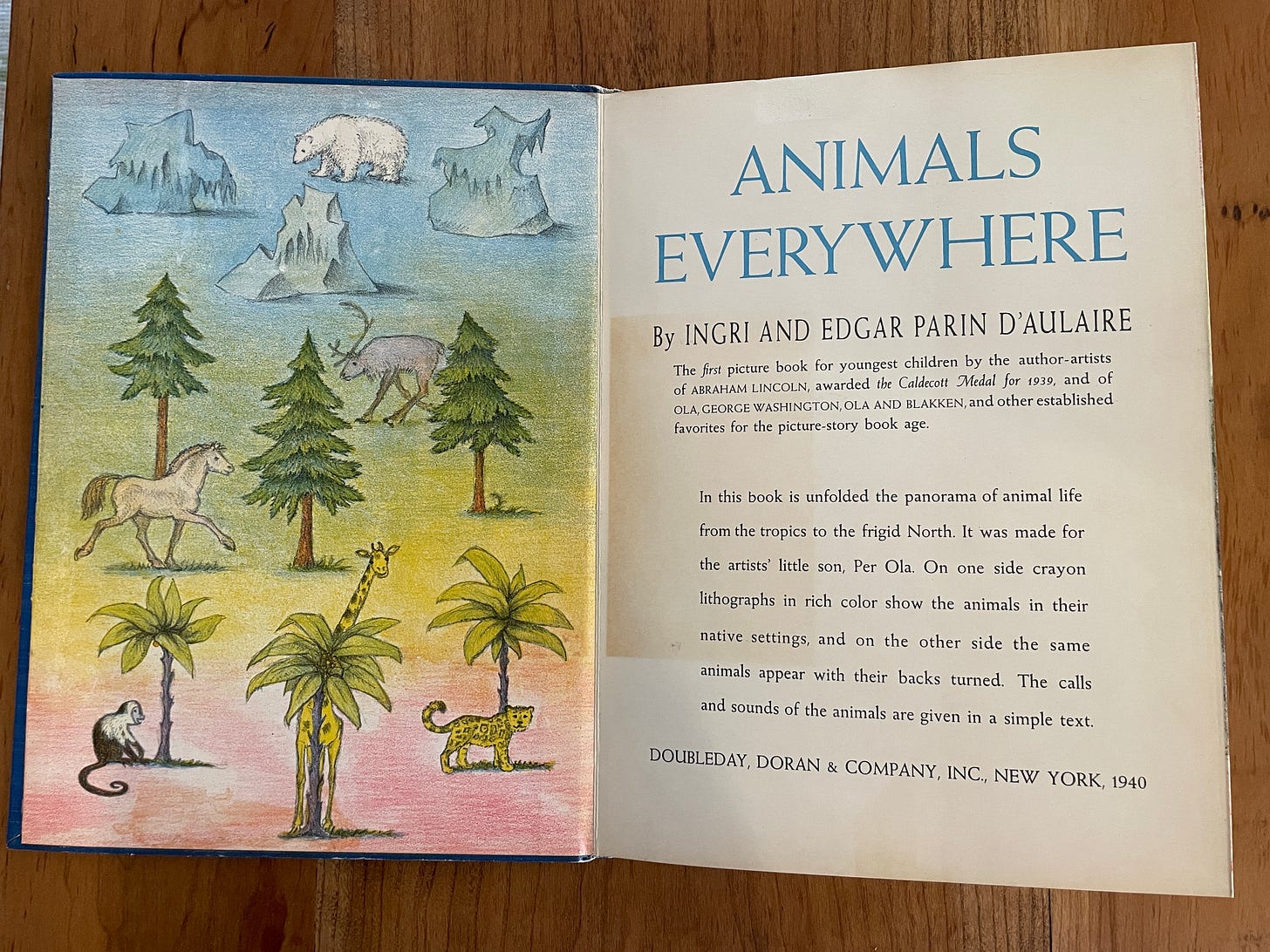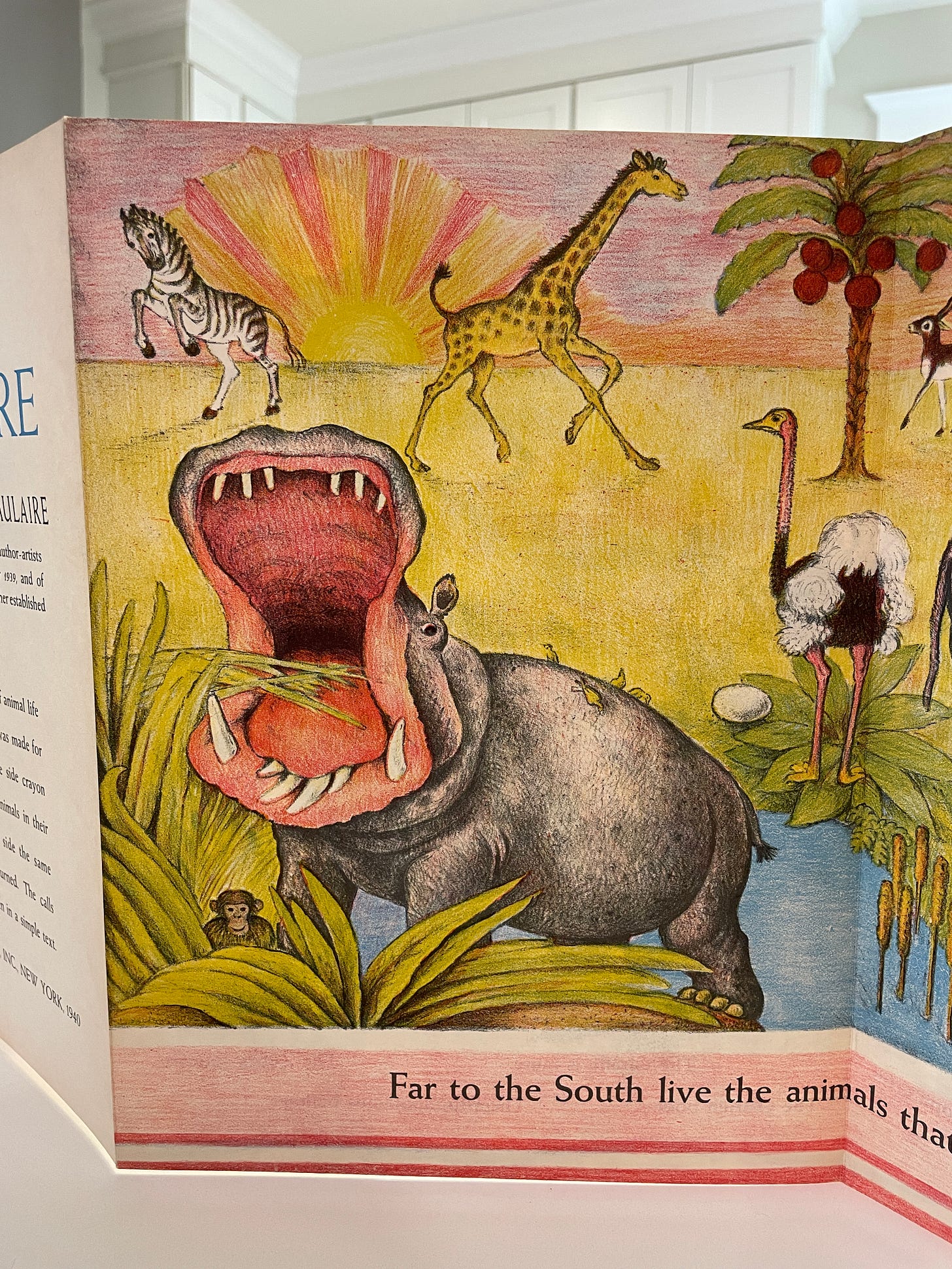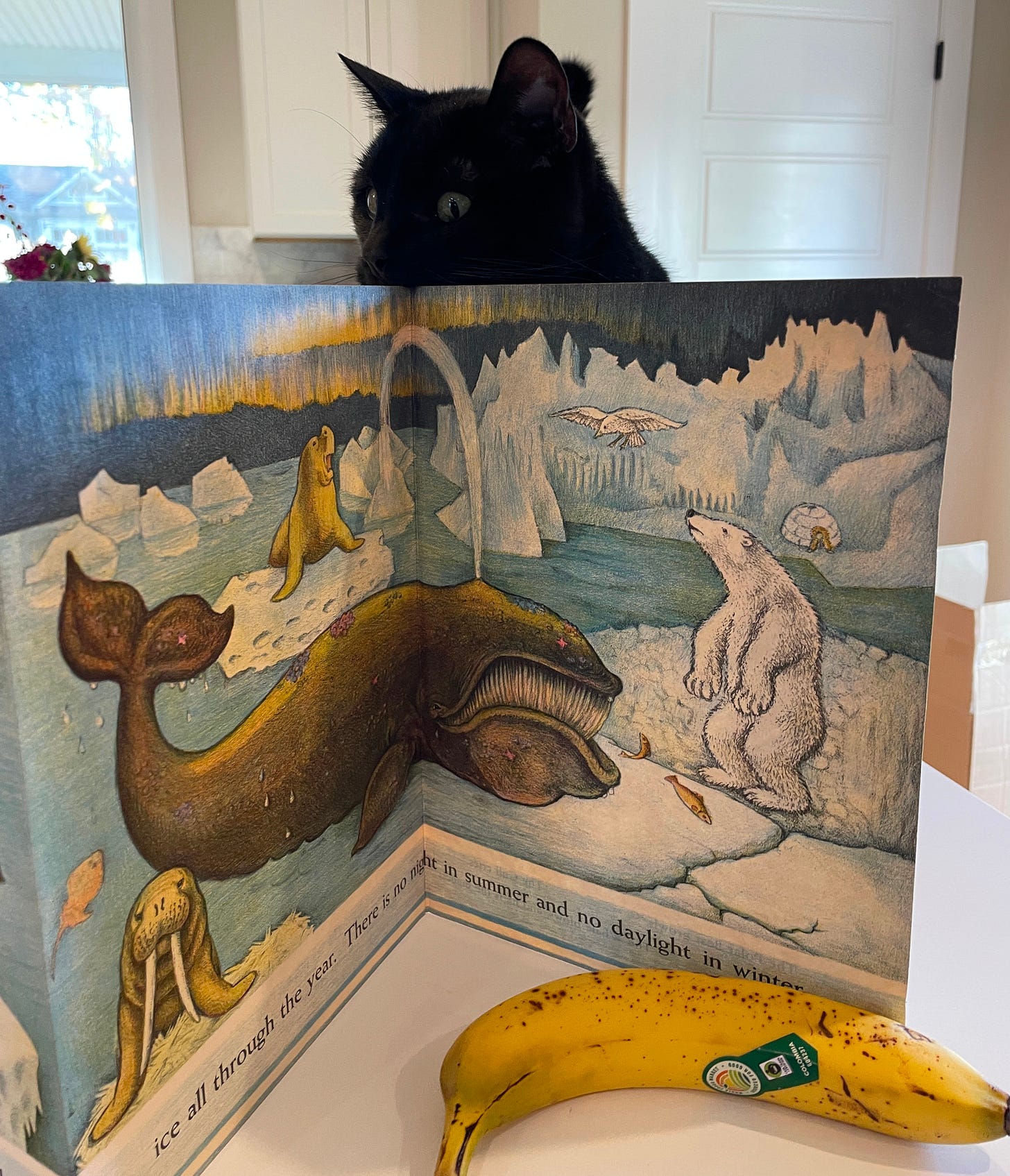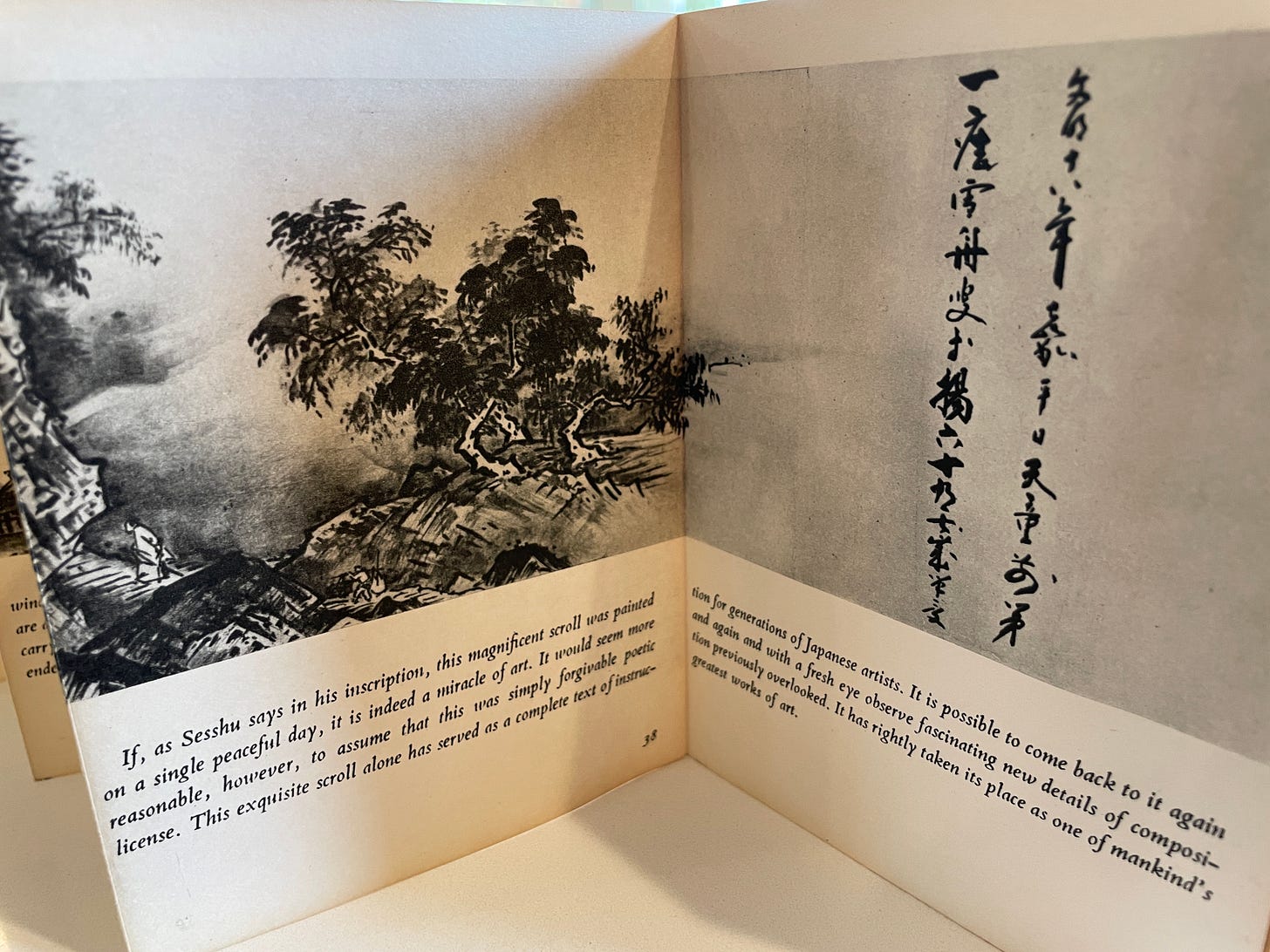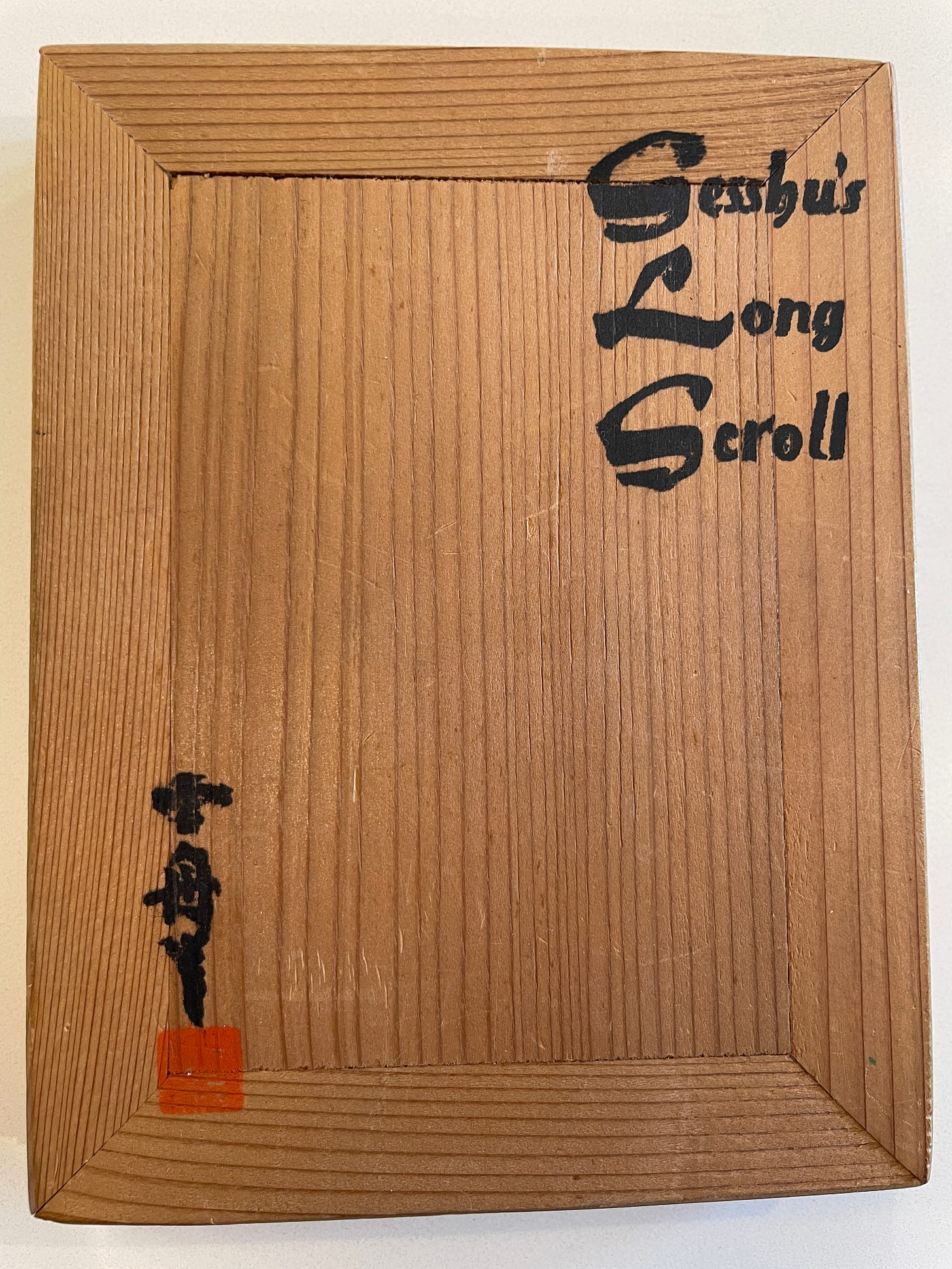Decades before Percy Jackson introduced a new generation to Greek mythology, there was D’Aulaires’ Book of Greek Myths. Created by the enormously talented husband-wife team of Ingri and Edgar Parin D’Aulaire, the book’s accessible myths and iconic illustrations are permanently seared into my brain from endless rereadings.
Over 50 years later, the book remains in print. The latest version has a new cover as well as an afterword with unpublished illustrations.
But it’s missing something that you’ll only find on the original jacket. A confession.
“In their early books, effects of color and texture were achieved by the painstaking method of drawing directly on lithograph stone; the same fine results are accomplished today by adapting this process to acetate separations.”
This statement from the publisher is false. The reason they switched was a matter of cost, and quality had to be sacrificed. The “painstaking” process of stone lithography used for their early children’s books, including their Caldecott Award winning Abraham Lincoln, had genuine advantages. (See this terrific Atlas Obscura article for a discussion of how a boutique publisher reprinting their early books has dealt with the issue of color.)
When I found out about this shift in printing, I decided I wanted to buy an earlier book of theirs that used stone lithography. My choice was Animals Everywhere, which came out in 1940 and was reprinted in 1954. I opted for the first printing, because I wanted to make sure this was from their stone lithography period.
And that’s when I discovered something else. The 1940 edition of Animals Everywhere wasn’t just printed with more vibrant colors than later books. There was something absolutely unique about it, something that will probably prevent it from ever being reprinted, even by a boutique publisher
Looks like a normal book, right?
Open the cover…wow! The colors really are vibrant! I notice a clear difference between these illustrations and the ones in my Greek Myths. But that’s not even close to the biggest difference.
The D’Aulaires had an epic vision for their book. A vision that could only be realized by making the book extremely long.
Eight feet long.
I’ve set the book up on my kitchen island and used a panorama shot to capture the sheer scale of the book. An eight foot, stone-lithographed, brightly colored continuous landscape of animals, all matched to their respective environments.
The scene takes place over the course of a day, starting with a hippo at sunrise:
And ending with a polar bear in the north during the endless night. (Cat and banana for scale.)
As if this weren’t amazing enough, the other side of the panorama replicates the same scene, but the narrative at the bottom changes, as do the colors.
Now we read about the noises the animals make. Oh, and the time of day has been reversed as well!
Book Glory is all about books as objects. As artifacts. And I honestly can’t think of a better example than this tour-de-force book by two of the most influential artists in the history of children’s books. The panorama style makes for a completely unique experience, something that can’t be replicated in any other way.
It’s a format that’s also perfectly tailored to publishing a book that reproduces…a panorama! The great publisher of Eastern-themed books, Charles E. Tuttle (now Tuttle Publishing), used it for their edition of Sesshu’s long scroll, a 15th century Japanese masterpiece.
Below each section of the scroll, you can read editorial commentary that corresponds to the section.
Tuttle took great care to make their books genuinely special artifacts, and Sesshu’s Long Scroll, in addition to being published as a panorama, was also bound in wood.
I find myself returning to Animals Everywhere whenever people, especially people with children, want to hear more about why I love books. It’s so exciting to see a child walking around the book, engaging with it physically, getting close to read the text, then stepping back to see the whole scene. And when I unfold Sesshu’s Long Scroll, I can’t help but be awed by a sense of connection to the original, as if has been teleported into my own home.
If you found these books fascinating and inspiring, please consider sharing this post and Book Glory with other book-loving friends!
And if you are wondering how to find high-quality versions of the books I’ve featured here, at a low price, a paid subscription will unlock my step-by-step advice on how to do it. There’s huge variation in price on these books, and you could end up saving $100 just by following the steps I lay out.
Thank you so much for reading and I hope see you back here for more Book Glory!
Keep reading with a 7-day free trial
Subscribe to Book Glory to keep reading this post and get 7 days of free access to the full post archives.

